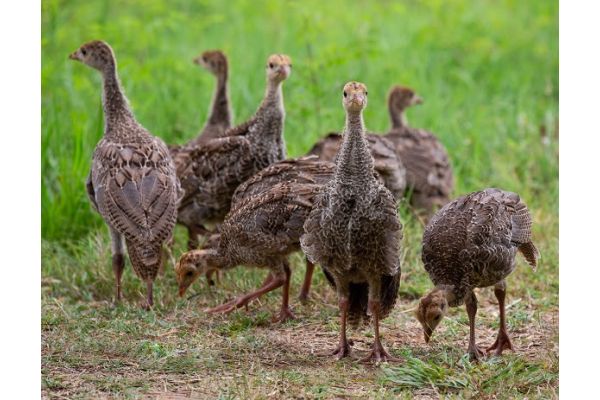NWTF Releases New Habitat for the Hatch Video Series

EDGEFIELD, S.C.—From heavy machinery grinding down invasive vegetation to drip torches reverting landscapes to an early successional state, projects for the National Wild Turkey Federation’s Habitat for the Hatch are underway, creating the essential habitat wild turkeys need for reproductive success. As part of the initiative, the organization launched a new video series that chronicles the hard work, partnerships and overall dedication for the wild turkey across the initiative’s 18-state range.
Habitat for the Hatch is an initiative designed to increase wild turkey nesting success, poult production and recruitment (survival of poults into adulthood) and combat the population decline felt in much of the region. The new video series showcases projects in four states—Alabama, Florida, Tennessee and Texas—emblematic of the work the NWTF is doing across the initiative’s 18-state region. The first video is live, and a new video will air on YouTube weekly until early November.
“We are excited to share the great work of Habitat for the Hatch with our community of conservationists,” said Derek Alkire, NWTF district biologist. “From Texas to Florida, the NWTF’s Habitat for the Hatch Initiative is working to create the vital nesting and brood-rearing habitat that hens and poults need for a sustainable and growing population. With just over a year into the initiative, we are making excellent progress toward our 1-million-acre goal. We are proud to share some of our accomplishments and projects through this new video series.”
The first segment of the video series can be viewed here and highlights the partnerships and work of Habitat for the Hatch at Alabama’s Portland Landing Special Opportunity Area, public land owned by the Alabama Department of Conservation and Natural Resources Division of Wildlife and Fresh Water Fisheries.
A new Habitat for the Hatch video will go live throughout the rest of the month and into November, including:
- October 23: Upper Hillsborough WMA in Florida’s Polk and Pasco Counties.
- October 30: Otey Mills Wildlife Refuge in Maryville, Tennessee.
- November 6: Private land work as part of the Brushy Creek Wildlife Management Association in Frankston, Texas.
“We created this video series to bring the great work of Habitat for the Hatch to the forefront of our members and volunteers,” said Pete Muller, NWTF director of communications. “Habitat for the Hatch would not exist were it not for the talented NWTF biologists, volunteers and partners that bring every project to life. This series highlights those folks and how we are creating more suitable habitat to benefit turkey numbers and positively impact countless other wildlife species. Mark this video series on your calendars and share with your friends and family; this is the great work we all rally behind.”
Learn more about the southeastern initiative and how you can help create more habitat for the hatch.
About the National Wild Turkey Federation
Since 1973, the National Wild Turkey Federation has invested over half a billion dollars into wildlife conservation and has positively impacted over 23 million acres of critical wildlife habitat. The NWTF has also invested over $9 million into wild turkey research to guide the management of the wild turkey population and to ensure sustainable populations into perpetuity. The organization continues to deliver its mission by working across boundaries on a landscape scale through its Four Shared Values: clean and abundant water, healthy forests and wildlife habitat, resilient communities, and robust recreational opportunities. With the help of its dedicated members, partners and staff, the NWTF continues its work to provide Healthy Habitats. and Healthy Harvests. for future generations.
